
Source: UC Davis Health- Children’s Hospital
What is positive parenting and why is it powerful?
- Positive parenting is about showing children love, warmth and kindness.
- It’s about guiding children to act the way you want by encouraging and teaching them.
- It’s about helping children thrive by sending the powerful message: You are loved, you are good, you matter.
Research reveals the power of positive parenting
- Positive parenting sets children up for success
Research shows that positive parenting helps children do better in school, have fewer behavioral problems, and stronger mental health.1 - Positive parenting helps the teenage brain
Neuroscientists discovered that positive parenting contributes to better functioning in the brain regions associated with emotions and cognition during the teen years.2 - Positive parenting is linked to a happy and healthy adulthood
Harvard scientists found that positive parenting has long-term benefits, including better relationships, mental health, and well-being during adulthood.3
PRIDE skills — Five ways to provide positive parenting
The PRIDE skills are five positive parenting techniques that can easily be used in every day life. The skills have been shown in studies to be a successful way to support children’s development.
Tip: As with all parenting advice, experts recommend using the skills in a way that feels right for you and your family.
PRAISE is a positive statement that expresses approval. 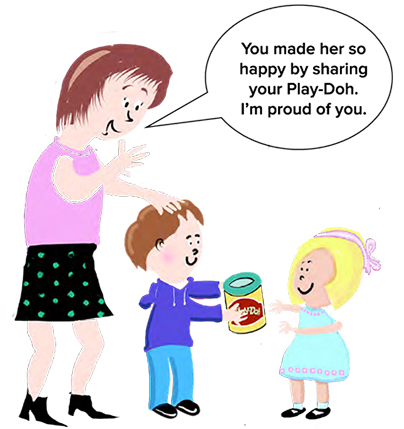
Praise makes children feel good
What we tell children becomes their inner voice and has the potential to build up or tear down. Praise builds children up by strengthening self-esteem and self-concept.
Praise teaches children
Praise gives guidance about your standards of behavior. When a behavior is rewarded, children learn how you want them to behave. Each time you praise that behavior, your child will be reminded of your expectations.
Praise changes behavior
When a behavior is praised, children will continue on with this behavior.
4 tips for harnessing the power of praise
- Label your praise
Be specific with your praise to teach your child what she did correctly. For example, instead of saying, “Good job,” try adding an explanation such as, “Good job waiting patiently while I was on the phone.” Your child won’t have to guess what you like. - Praise the baby steps
Praise doesn’t have to be reserved for “big” behaviors. Praise for small accomplishments can motivate your child when working towards a larger goal. For example, if you want your child to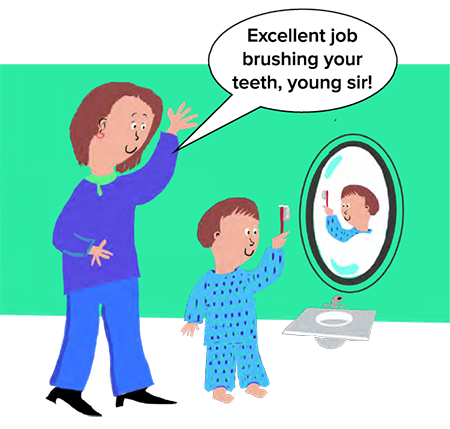 get ready for bed independently, positive feedback for small steps such as brushing teeth and picking out pajamas can keep him encouraged.
get ready for bed independently, positive feedback for small steps such as brushing teeth and picking out pajamas can keep him encouraged. - Praise achievement and effort
Focus your praise on effort and hard work, rather than just the end product. For instance, after a soccer game, praise your child for winning the game and trying her hardest. - Praise with your words and body
Adding smiles, a rub on the back, enthusiasm, a hug, a kiss or a high five can make praise feel extra special.
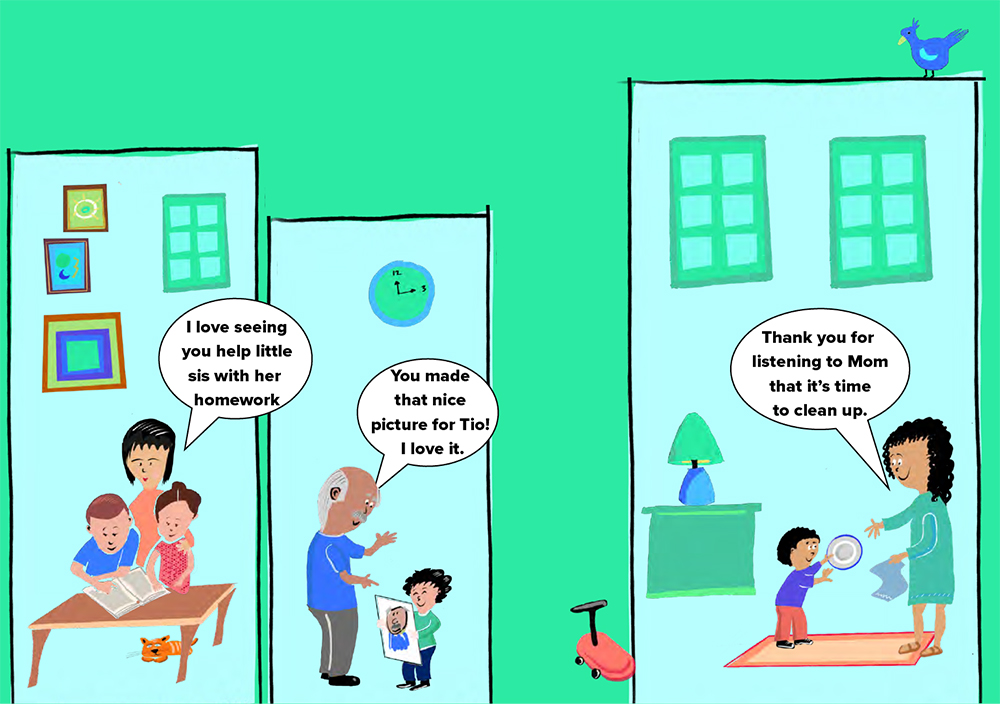
REFLECTION involves repeating back a child’s words and elaborating on what the child said. 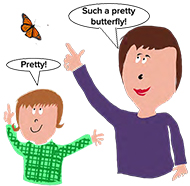
Reflections show you are listening
Reflections let your child know you are paying attention. They communicate the message: ‘I hear you and I get you.’
Reflections promote back-and-forth conversation
When a child’s statements are reflected, it rewards the child for speaking. This encourages children to start conversations and share their thoughts more frequently. Reflections are more powerful than questions to get a child talking.
IMITATION involves playing in a similar way as your child or making similar gestures.
Imitation makes children feel important
An adult imitating a child’s actions is very flattering. Imitation sends the message: ‘What you are doing is interesting and important, and I want to do it too.’
Imitation allows you to get on the child’s level
Imitation is a good way to join in the child’s play if you are unsure of how to do so. Children are the play experts and by imitating what they are doing, they will teach youhow to play.
Imitation helps with social skills
When an adult imitates a child, the child is more likely to imitate the adult. Imitating each other is a great way to practice back-and-forth social exchanges.
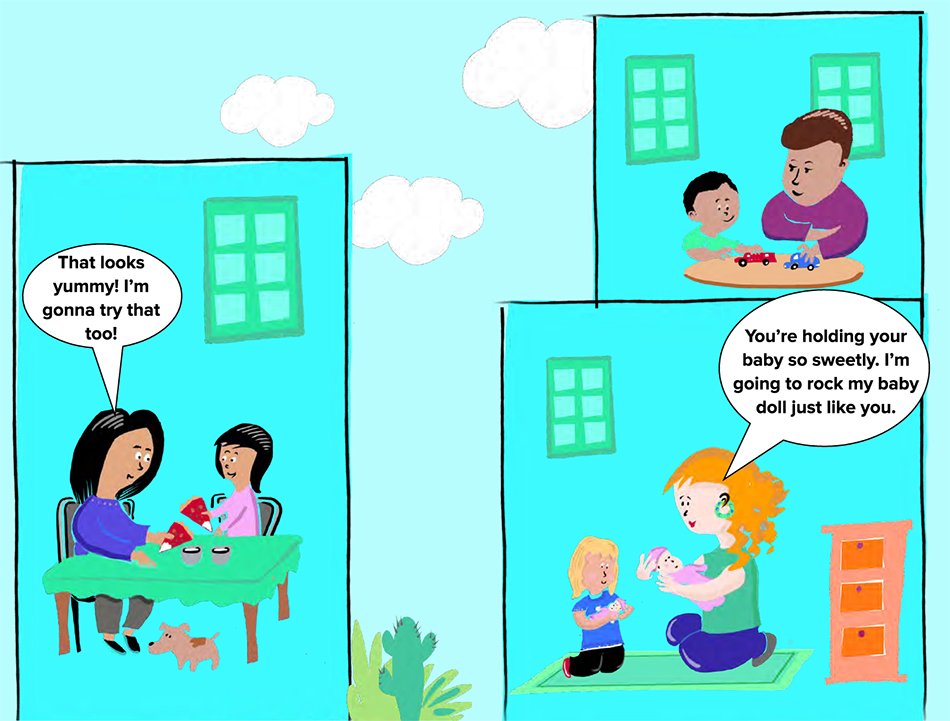
DESCRIPTION involves describing what your child is doing, much like a sportscaster giving a play-by-play narration of a game. 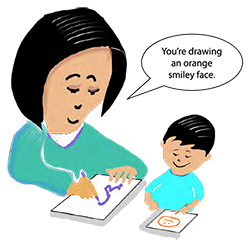
Descriptions show you are paying attention
Descriptions let your child know they have your undivided attention and you are interested in what they are doing. This is a big self-esteem boost!
Descriptions increase attention span
Descriptions help children focus and spend more time on a task. It’s a great tool to use during homework.
Descriptions teach young children
Descriptions help young children learn new words and concepts such as shapes, sizes, numbers and colors.
ENJOYMENT means expressing warmth and positivity with your words and actions while you play and interact with your child.
Enjoyment strengthens the parent-child bond
Adding warmth and excitement to the interaction lets your child know you care about them and enjoy spending time together. 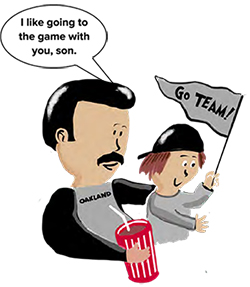
Enjoyment models positivity
Children pick up on and mimic the emotions of others. When you are cheerful, your child will be more likely to act positively.
Showing enjoyment with your body
- Smile
- Make eye contact
- Hug and kiss your child
- Put your arm around your child
- Rub your child’s back
Showing enjoyment with your voice
- Let your child know how much you enjoy being with them
- Talk in a warm and animated voice
- Laugh together
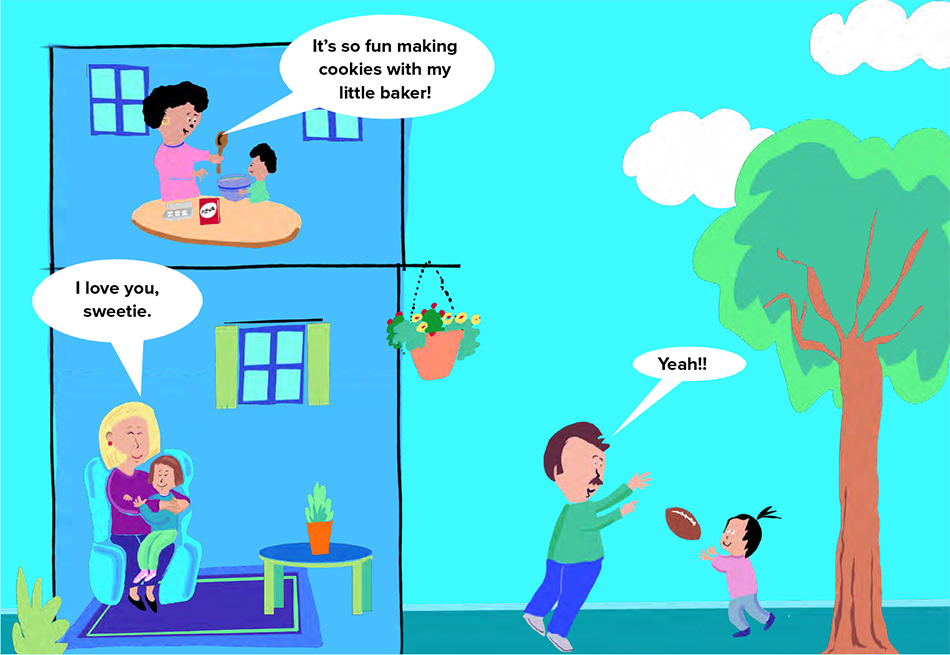
Promoting good behaviors with PRIDE skills
PRIDE skills can be used to teach social skills, prepare children for school, and help them learn to manage behaviors and emotions. To promote healthy development with PRIDE skills, watch for moments where your child displays a good behavior.
Every time you notice a good behavior you’d like to see more of, shower your child with PRIDE skills. The more you point out these good behaviors, the more they will blossom and grow.
Good behaviors to notice and praise:
Social skills and manners
- Being kind
- Being a good sport
- Compromising
- Doing things for others
- Helping
- Making eye contact
- Saying please and thank you
- Sharing
- Showing empathy
- Taking turns
- Using nice words
Self-control skills
- Being careful and gentle
- Being safe
- Staying calm
- Calmly expressing feelings
- Waiting patiently
School and learning skills
- Concentrating
- Creative thinking
- Flexible thinking
- Focusing and staying on task
- Persisting
- Problem-solving
- Thinking things through
- Working hard
- Working independently
Listening and obeying skills
- Accepting no for an answer
- Asking permission
- Doing things right away
- Following directions
- Listening the first time
Targeting inappropriate behaviors with PRIDE skills
Positive parenting tip:
Be on the lookout for good behaviors, even if they are brief, and “catch” them right away.
PRIDE skills can help decrease unwanted behaviors. This is done by “catching” your child doing something good that is opposite of an inappropriate behavior. For instance, want your child to stop running ahead at the grocery store? Praise him for staying next to you.
Almost all unwanted behaviors have an opposite good behavior. When you compliment your child for displaying a good behavior, it helps him learn what to do rather than what not to do, and increases the likelihood he’ll repeat that good behavior.
To decrease an inappropriate behavior…
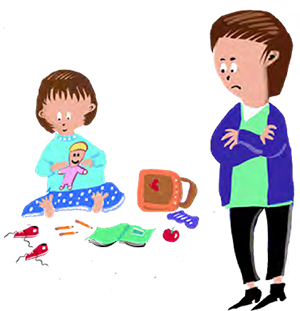
“Catch” the opposite good behavior…
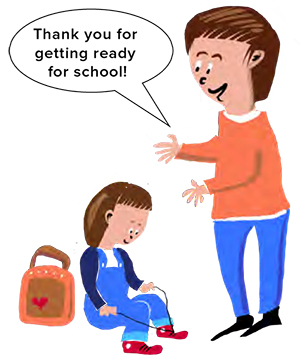
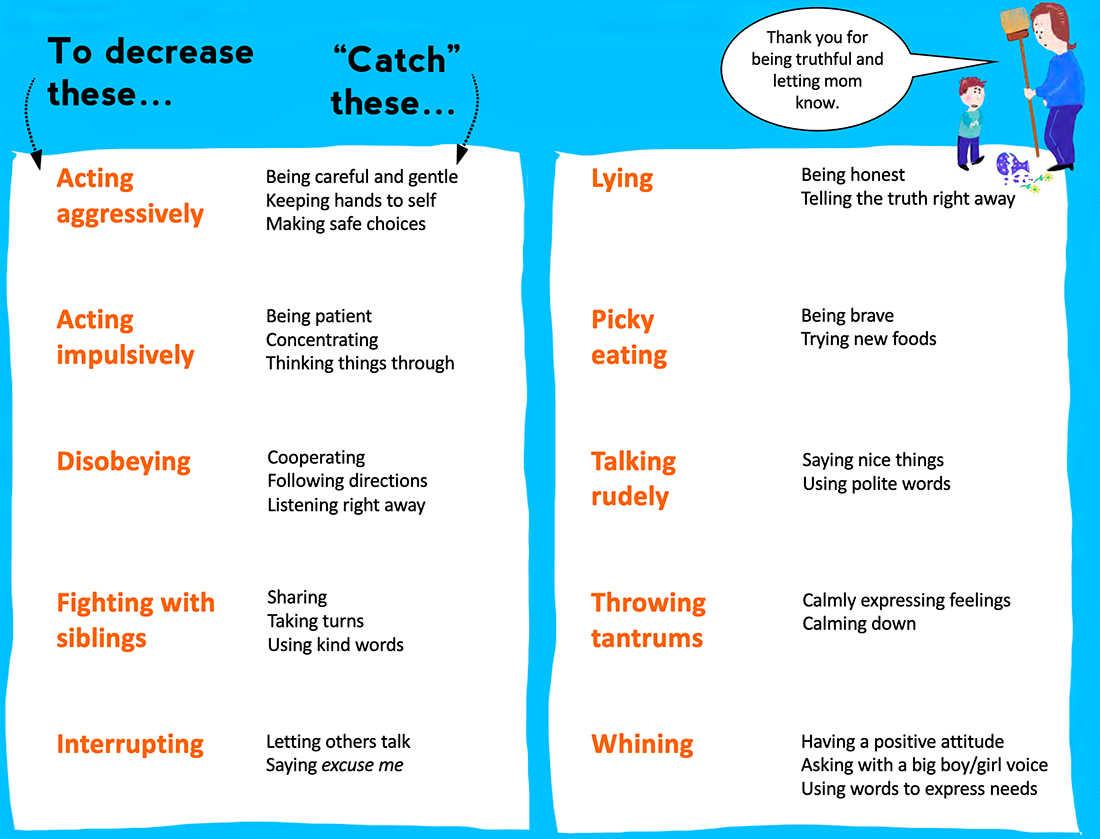
A final note
Do what feels right for your family
You know your child best, so use the skills in a way that feels right. It’s all about encouraging values and behaviors that are personally important to you. 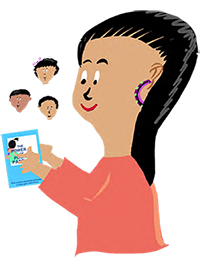
Give yourself praise
Parenting can be hard so remember to go easy on yourself. Showing yourself love is important just as you’d show your child love. Give yourself praise from time-to-time for doing your best.
